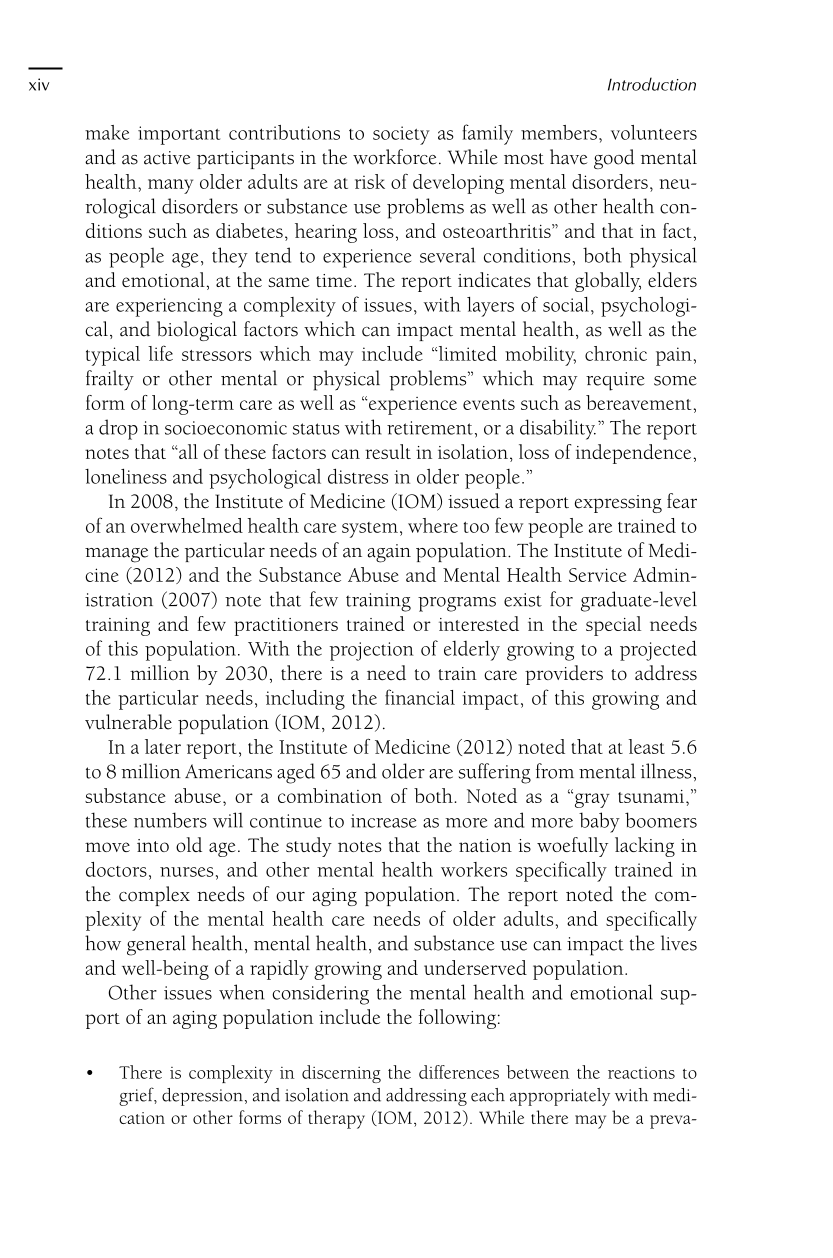xiv Introduction
make important contributions to society as family members, volunteers
and as active participants in the workforce. While most have good mental
health, many older adults are at risk of developing mental disorders, neu-
rological disorders or substance use problems as well as other health con-
ditions such as diabetes, hearing loss, and osteoarthritis” and that in fact,
as people age, they tend to experience several conditions, both physical
and emotional, at the same time. The report indicates that globally, elders
are experiencing a complexity of issues, with layers of social, psychologi-
cal, and biological factors which can impact mental health, as well as the
typical life stressors which may include “limited mobility, chronic pain,
frailty or other mental or physical problems” which may require some
form of long-term care as well as “experience events such as bereavement,
a drop in socioeconomic status with retirement, or a disability.” The report
notes that “all of these factors can result in isolation, loss of independence,
loneliness and psychological distress in older people.”
In 2008, the Institute of Medicine (IOM) issued a report expressing fear
of an overwhelmed health care system, where too few people are trained to
manage the particular needs of an again population. The Institute of Medi-
cine (2012) and the Substance Abuse and Mental Health Service Admin-
istration (2007) note that few training programs exist for graduate-level
training and few practitioners trained or interested in the special needs
of this population. With the projection of elderly growing to a projected
72.1 million by 2030, there is a need to train care providers to address
the particular needs, including the financial impact, of this growing and
vulnerable population (IOM, 2012).
In a later report, the Institute of Medicine (2012) noted that at least 5.6
to 8 million Americans aged 65 and older are suffering from mental illness,
substance abuse, or a combination of both. Noted as a “gray tsunami,”
these numbers will continue to increase as more and more baby boomers
move into old age. The study notes that the nation is woefully lacking in
doctors, nurses, and other mental health workers specifically trained in
the complex needs of our aging population. The report noted the com-
plexity of the mental health care needs of older adults, and specifically
how general health, mental health, and substance use can impact the lives
and well-being of a rapidly growing and underserved population.
Other issues when considering the mental health and emotional sup-
port of an aging population include the following:
• There is complexity in discerning the differences between the reactions to
grief, depression, and isolation and addressing each appropriately with medi-
cation or other forms of therapy (IOM, 2012). While there may be a preva-









































































































































































































































































































